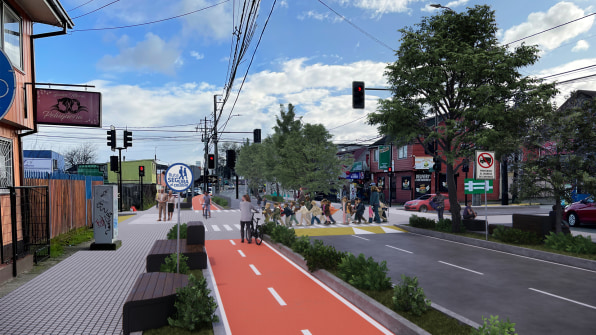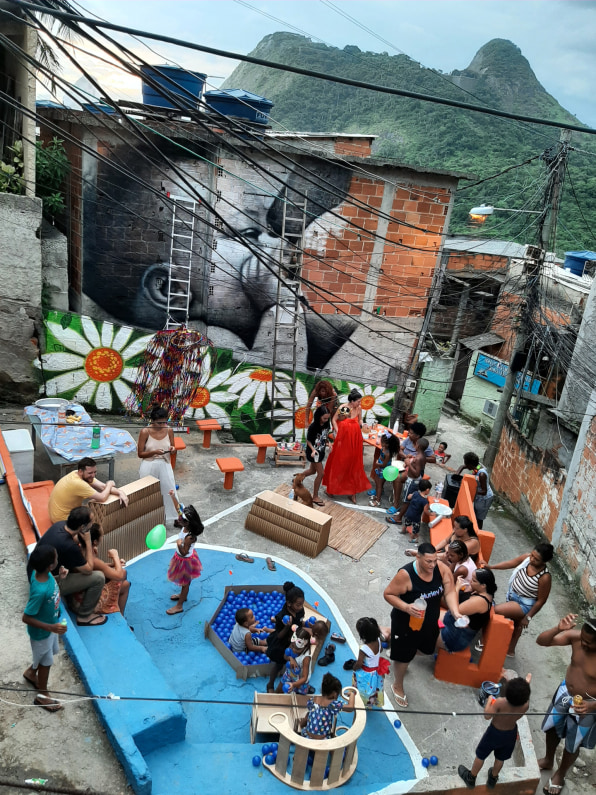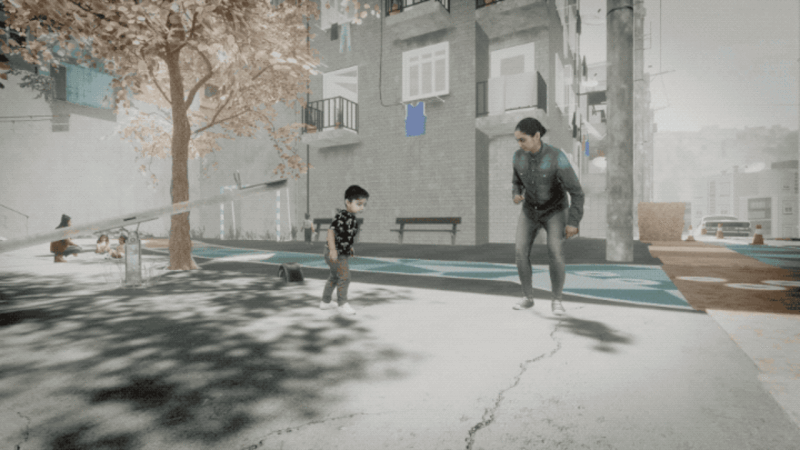VR95 is new virtual reality experience that transports users to a world many rarely see or consider. It’s not some fantasy land or extraordinary metaverse. Instead, VR95 (as the name suggests) shrinks users to see a typical city scene from 95 centimeters, or three feet and one inch. This is the height of an average 3-year-old child. The world, as seen through their eyes, is less than ideal.
“Basically you see cars and traffic, noise and pollution everywhere as a child from that perspective,” says Dr. Sara Candiracci of the global design, engineering and planning firm Arup. She’s the Europe lead for Arup’s Social Value and Inclusive Cities efforts, and was part of the development of the VR95 tool.[Image: Arup]
But it’s not just a visual reminder of what it’s like to see the world as a child. The tool also shows what that same traffic-clogged city scene would look like if it was designed with that 3-year-old in mind. The sidewalks can be widened, pocket parks can be added, more green space can be planted, and car speeds can be reduced. “You can see how by adding some elements, by looking at children’s needs, you are creating an urban environment that’s great for everyone,” Candiracci says.https://cdn.jwplayer.com/players/0uGFNGVr-27mBLzWL.html
VR95 is part of an effort to get city leaders, designers, and developers to think more carefully about how the built world is used and experienced by children. In consultation with community groups in cities around the world, Arup and the Bernard van Leer Foundation have developed the Proximity of Care Design Guide, which outlines effective and inexpensive ways urban spaces can be designed and built to better serve children, their caregivers, and pregnant women. The guide primarily focuses on the safety and development of children under 5. “It’s when about 80% of the brain’s architecture develops,” Candiracci says. “A built environment that supports a nurturing relationship with caregivers, families, and neighbors has a huge impact on their well-being.”

Designing cities for children means much more than just building playgrounds. Candiracci says the design guide lays out ways that neighborhoods can be designed to encourage safer, more active lifestyles among children and the people who care for them. Increasing access to nature, adding educational and play elements to public infrastructure, and engaging wider segments of the population in planning decisions are key ways cities can improve the lives of younger people. Candiracci says the guide focuses on showing how child-focused design doesn’t have to be siloed as some separate side of citymaking. “It has to be and it can be embedded in everyday work for developers, urban practitioners and city authorities,” says Candiracci.[Image: Arup]
The design guide was developed over the past year-and-a-half by Arup, working alongside ten urban planning, design, and development organizations globally. The groups participated in a training program and identified ways that child-friendly design could address challenges or problems in their own cities. Three of these organizations were awarded grants from Arup to implement those ideas.
In Valdivia, Chile, a road with several schools and very heavy traffic was made safer for children by widening pavements, raising pedestrian crossings, and rerouting trucks. In Rio de Janeiro, a public plaza was redesigned as a space where mothers could safely and comfortably breastfeed. And in Montevideo, Uruguay, multisensory play equipment and wayfinding signage was installed for the benefit of deaf children.

Candiracci says the design guide is meant to be used by community groups, design studios, public agencies, and private actors. Real estate developers, who often drive much of what gets built in a city, are ideal users of this guide, she says. “They have a huge impact in terms of the way cities are shaped, and in many cases the needs of young children are not taken into account, she says. “The moment we have developers on board and they start using the guide for better social outcomes, it will be great for the communities they serve and support, but also for them, because they can meet their ESG commitments.”
Candiracci also notes that her own organization, Arup, could play a considerable role in bringing these ideas to the way the world gets built. “We work globally, and have 17,000 employees worldwide,” she says. “The moment Arup starts using the guide, we’re going to have a huge impact on the way we design interventions. That’s my first goal.”Be in the Know. Subscribe to Fast Company
ENDS
—This article first appeared https://www.fastcompany.com
Seeking to build and grow your brand using the force of consumer insight, strategic foresight, creative disruption and technology prowess? Talk to us at +971 50 6254340 or engage@groupisd.com or visit www.groupisd.com/story



